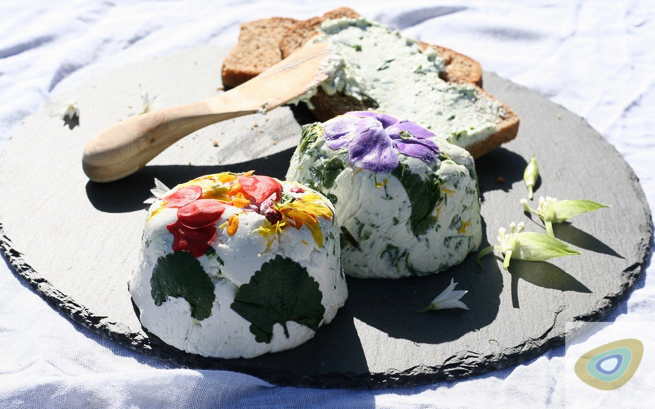
My enjoyment from foraging comes from living in the moment and within the seasons. Watching and appreciating as plants emerge, ripen, and fade and knowing the possibilities to be had from each part of the cycle. In having that intimate connection of harvesting a plant from where it has grown and, from it, creating a meal to nourish the body. The whole process is exceptionally rewarding. I eat something wild almost every day, preferring to use wild ingredients in an uncomplicated way. I find that it is this simplicity that makes regular use of foraged food more possible and less intimidating.
A simple recipe that show-cases wild flavours particularly well is this goats cheese. I used to think that cheese making required a whole ton of knowledge, time, and equipment, but this soft goat cheese is quick and easy to make and definitely worth doing. As they’re in season now, I’ve used ramsons, three-cornered leek, garlic mustard and chives all of which lend a lovely garlic and onion punch to the soft creaminess of the cheese.
The beauty of this method of cheese making is that you can let loose with your imagination and experiment with whichever flavour combinations you like depending upon what’s in season and what’s available in your wild food stores. Chopped nuts, greens, flowers, bulbs, pods – it can all be used to make a unique, impressive, and delicious cheese.
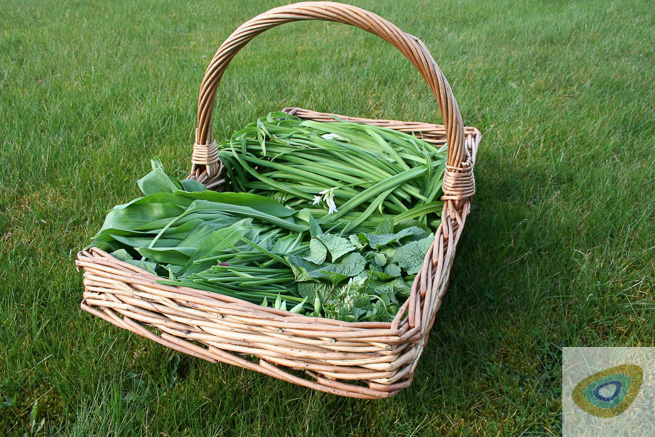
I could forage all the plants for this cheese within my home town here in Ireland. It’s often surprising what can be found right on your doorstep, sometimes quite literally.
Foraging Wild Garlic – What To Look For
Ramsons, Allium ursinum
You can often smell ramsons before you see them and it is one of the few plants that can be confidently identified by smell alone as the pungent garlic smell from the crushed leaves is unmistakable. They usually form dense carpets in damp woodlands and hedge banks and it is thus tempting to grab great handfuls of leaves at a time, but often growing amongst the ramsons are the leaves of the toxic Lords and Ladies, Arum maculatum, so extra vigilance should be used when harvesting.
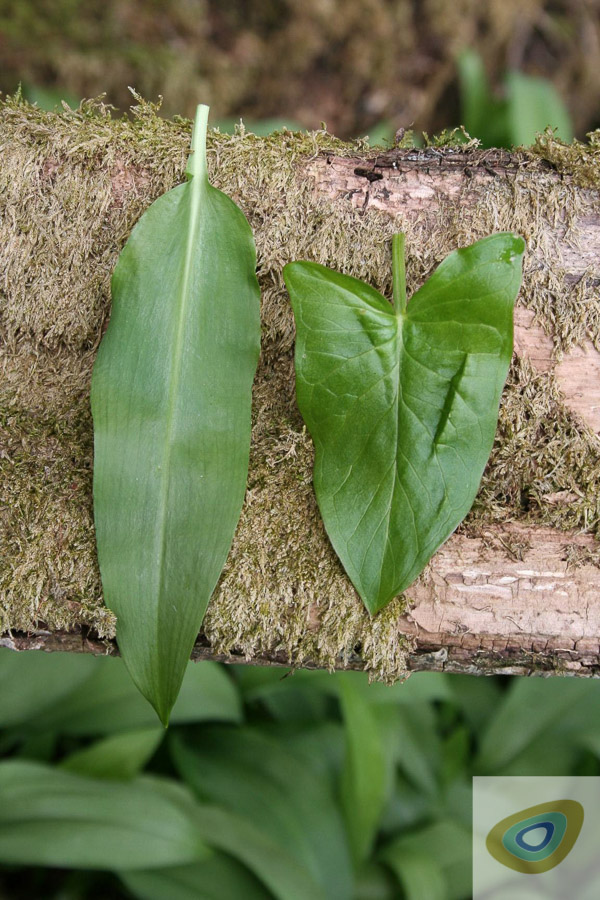
Care must be taken when picking ramsons as sometimes growing in similar habitats you will find the toxic Lily of the Valley, Convallaria majalis, which happens to be about the same shade of green and, when young, superficially similar in leaf shape.
I often see photos of foraged ramsons in which the entire plant, bulb, and all, has been uprooted. I consider this to be a little unnecessary as the rest of the plant, including the pods and flowers,are so good that leaving the bulb to do its thing year after year is more beneficial to the environment and forager alike.
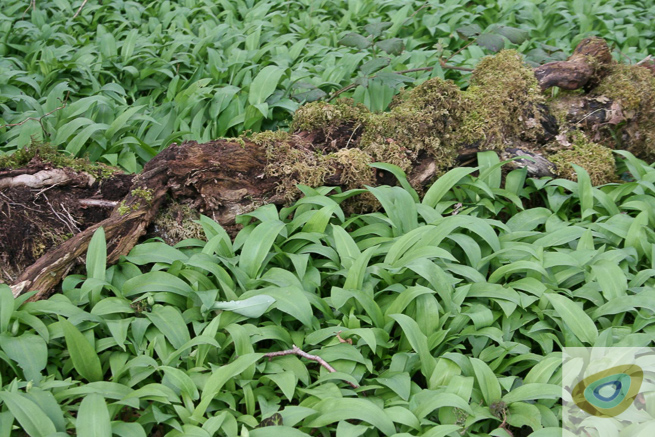

Garlic Mustard, Alliaria petiolata
Garlic mustard leaves are at their best before flowering, the taste becoming stronger and more bitter as the season progresses. Usually found on banks and roadside verges the clue to its growing habit is in its common name, “by-the-hedge.” The light green, hairless young leaves are roughly heart shaped becoming slightly more elongated and pointed throughout the growing season. The crushed leaves smell of garlic and have a pleasant oniony flavour.
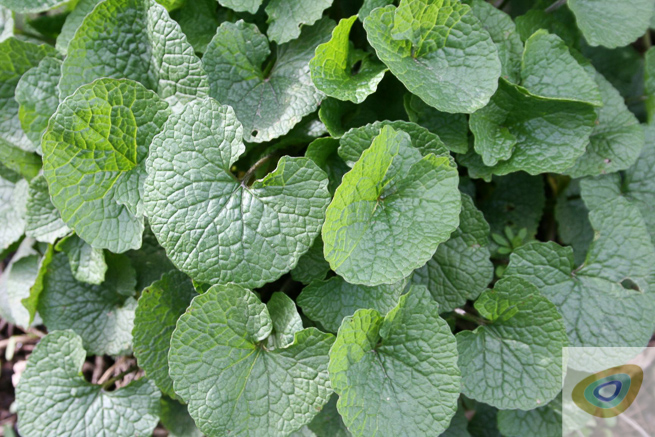
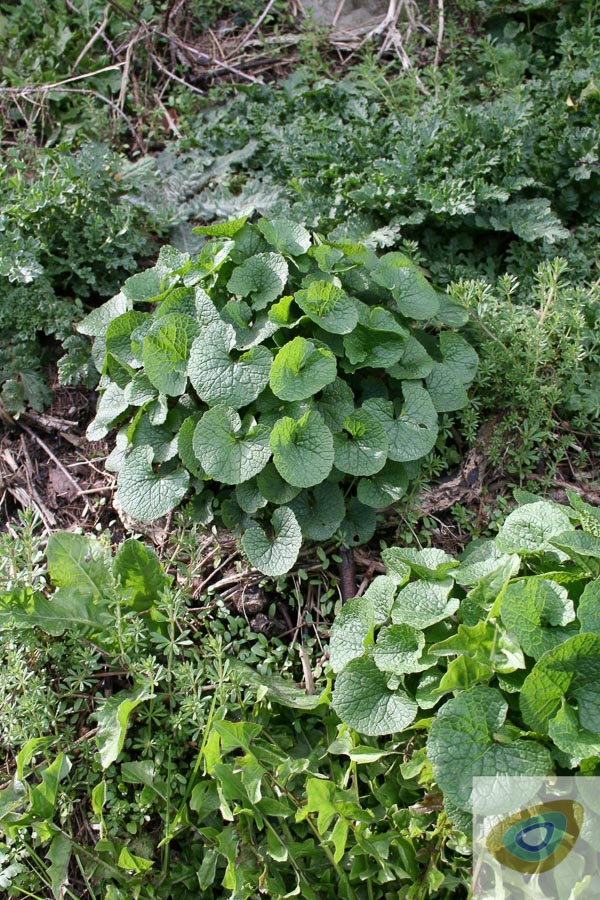
Three Cornered Leek, Allium triquetrum
From a distance, three-cornered leek looks very like a white bluebell even down to its habit of growing in large patches. It can be found in waste places, gardens, and hedges. A cross-section of the flowering stem reveals how this plant got its name, it is triangular and has three corners. Again, crushing the long, thin leaves releases a pleasant garlic smell. the taste is somewhere between garlic and spring onion (scallion) and I much prefer it over its more pungent cousin, the ramson. All parts of three-cornered leek are edible, although I prefer not to uproot the plant and only use what is above the ground.
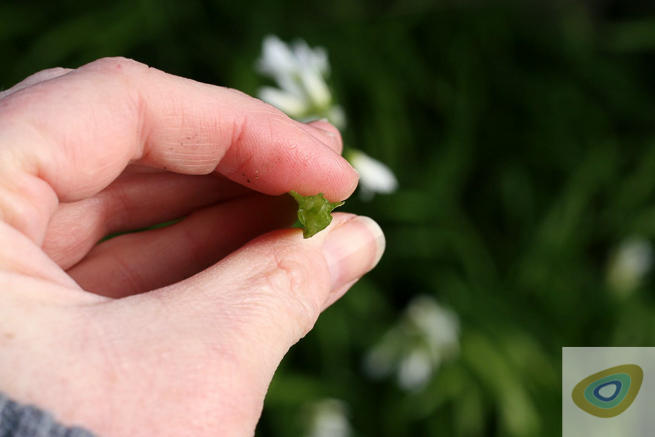
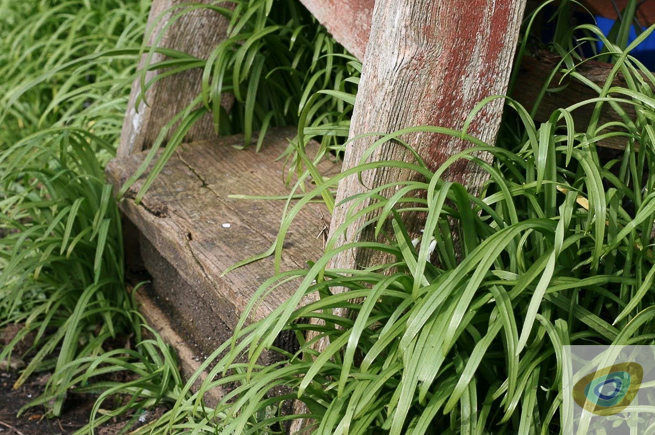

For more on identification of some of the plants mentioned and for additional inspiration for Spring flavour possibilities see here.
All-The-Garlic Goats Cheese – Method
I’m lucky enough to have an organic dairy not far from where I live which supplies me with fresh whole goats milk and, when making cheese, the fresher the better. Reaching to the back of shelves in the local supermarket or health food shop for the furthest date is necessary, old milk just doesn’t seem to work as well.
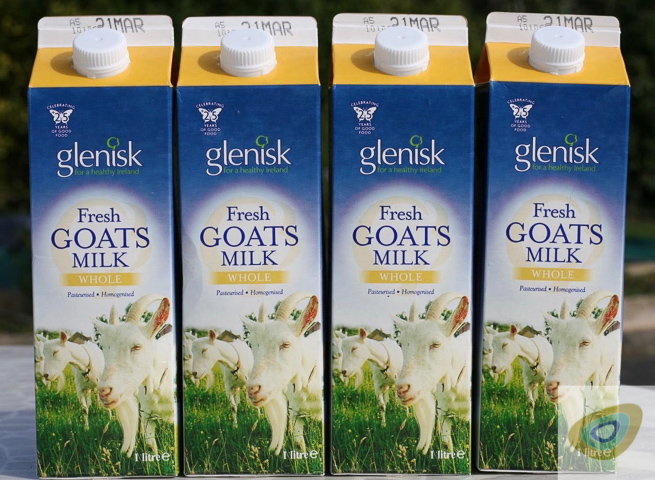
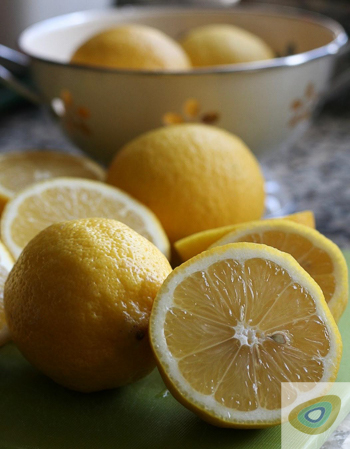
For every litre (quart) of milk, you’ll need the juice of two lemons.
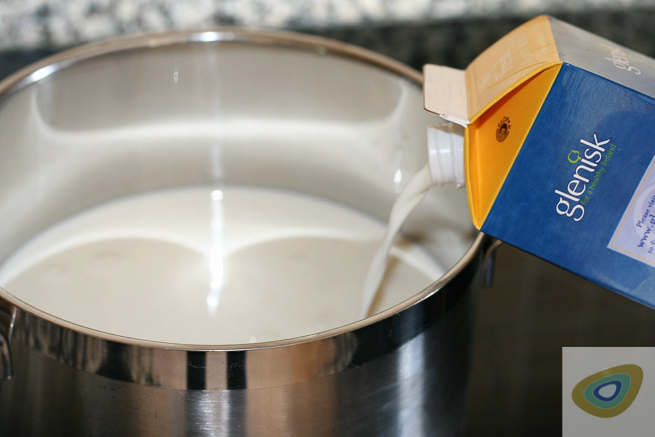
Pour the milk into a saucepan and heat gradually, stirring occasionally. I used three litres of milk to make enough cheese for six hungry adults.
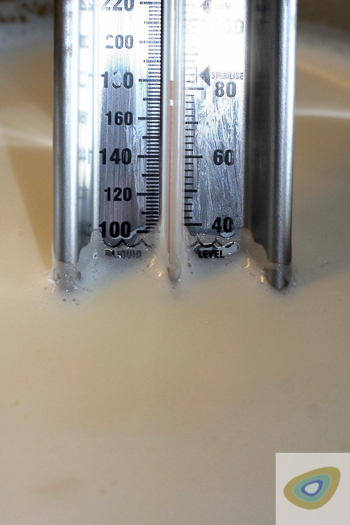
Keep an eye on the temperature and once the milk reaches 82 degrees Celsius (180 F). Remove from the heat and stir in the lemon juice (two lemons for every litre of milk). If you don’t have a thermometer, remove the pan from the heat on the first simmering bubbles. Using a thermometer gives more consistent results though.

Leave to stand for 20 minutes or so, a little more won’t hurt. At this stage, you should start to see the milk separating. It’s not always obvious, but you will start to see fine solids on the back of a wooden spoon or on the sides of the saucepan. If you’re overly concerned, a very small splash of cider vinegar will help things along.
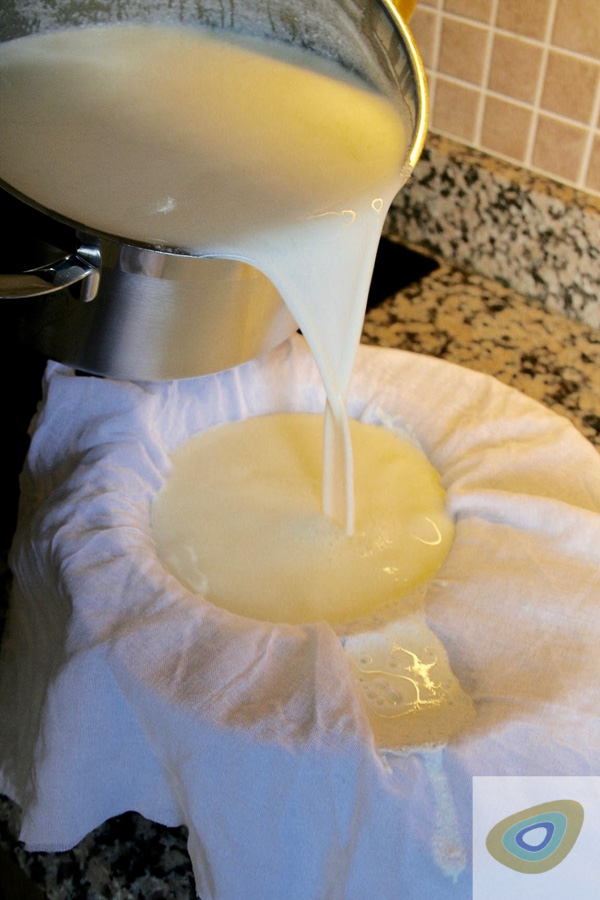
Line a colander with two layers of muslin and place over a large bowl. After the 20 minutes, slowly pour the contents of the saucepan into the muslin cloth so that the liquid pours through the muslin into the bowl and the solids are caught in the cloth.
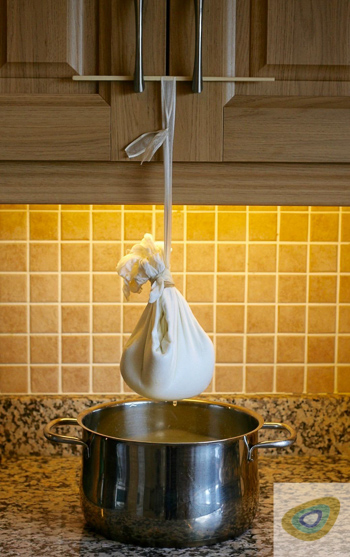
Tie up the corners of the muslin cloth and suspend from anything you’ve got handy to allow the curds and whey to separate. This will take two to three hours.
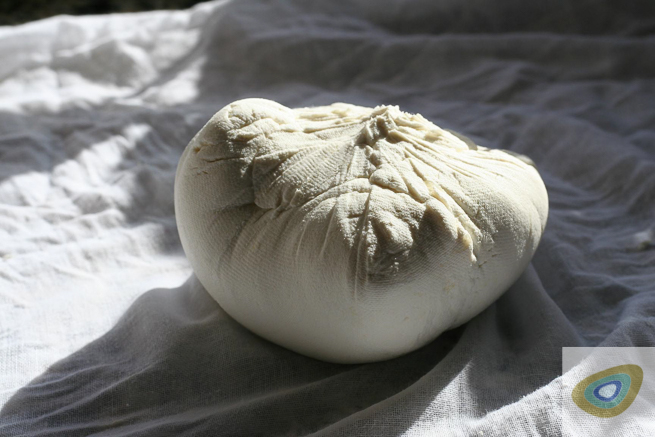
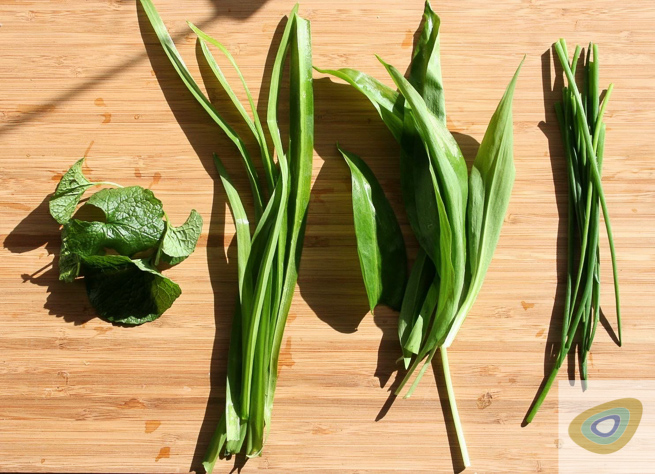
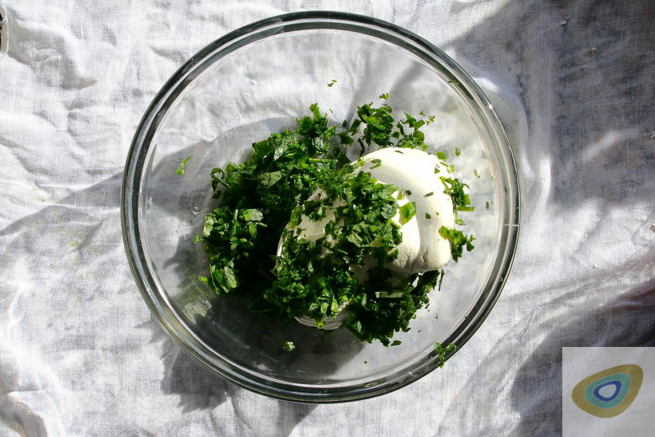
Once the excess liquid has drained from the cheese, place it into a mixing bowl, season if desired and mix in whichever ingredients you’ve chosen, in this case a handful of chopped mixed ramsons, garlic mustard, three-cornered leek, and chives.
That’s the cheese made and it can be served just as it is. I like to shape the cheese and decorate it with fresh edible flowers, I just think it looks a little more special this way. Line a ramekin with cling film and decorate with flowers before filling with the goats cheese and refrigerate until set.
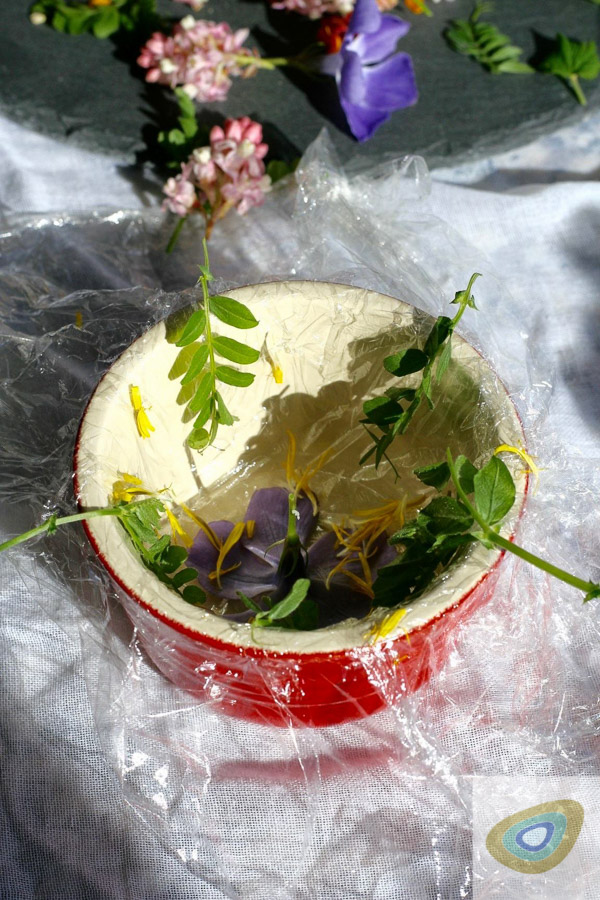

The preparation time for making homemade goats cheese is so little and customising it according to the seasons is so fun, that I make it regularly. For a simple thing, it can look impressive. Next time you go to a pot luck lunch or a friend’s house, bring one of these. They’ll love you for it.

Plants, The Law and Conservation
You should know the law with respect to picking wild plants and respect people’s private property.
Please read the BSBI’s Code of Conduct for the Conservation and Enjoyment of Wild Plants for guidance on best practice.
A Little Disclaimer
This article is not a complete treatment of all edible plants that might be available. Nor does it provide a complete treatment of all poisonous plants that may also be present in the habitat where you find the above-mentioned plants. If you want to learn more about plant identification you should invest in some good field guides. The safest way to learn about edible wild plants is for someone who already has the knowledge to show you in person. Any foraging you do on your own is at your own risk.
The most important thing to remember when identifying wild foods is:
IF IN DOUBT, LEAVE IT OUT!
Latest posts by Alison Delaney (see all)
- Beech Leaf Noyau – A Delectable Botanical Infusion - July 19, 2018
- Bog Myrtle Balm – Not Just For Insects - July 27, 2017
- Going Wild With Cheese - April 6, 2017

Austin Lill
Hi Alison,
Nice reading the article, I’ve made cheese in a similar fashion but with cow milk, it hadn’t occurred to try ‘goat juice’. I first made it as a by-product with the separated liquid being used for some early forays into lacto-fermentation of some Few Flowered Leeks growing near me.
You’ve given me a timely reminder to get on with both! 🙂
Alison
Hi Austin,
I’m pleased you enjoyed the article. I’d love to see how you get on with the goats cheese if you get a chance to try it. Interesting that you used whey for your lacto-ferment, how did that go? I tend to just use salt, so it’d be good to have other options to try out.
All the best,
Alison
Dave Howard
Hi Paul and Alison, thanks for this interesting article. I have two questions ; doesn`t the lemon juice make the resulting curds very sour? and what can the whey be used for as the amount of milk needed to make a decent amount of cheese must leave a lot of whey behind ?
Love the use of the edible flowers and wild herbs, they must really cheer up a cheese salad.
All the best to you both, Dave.
Alison
Hi Dave,
I’m pleased you enjoyed the article.
You’re right that there is a lot of whey left behind when making cheese this way, thankfully it doesn’t need to be discarded which is good news. It is high in protein, and probiotics and can be added to smoothies to give them an extra nutritional boost. I’ve also used whey in place of water when making stock for soups. I’ve never used it it to lacto-ferment ingredients the way in which Austin (above) has, but I do know that it’s a popular way to use the whey too. Having said all that, I usually just feed it to my chickens because of the protein and remaining calcium within it.
As for the sourness of the lemons, there is a slight tang of citrus within the cheese, but it shouldn’t be a dominant flavour. I find that cheese made with goats milk is more than capable of holding its own as the lemon is subtle, certainly not sour. I prefer not to add the vinegar I mentioned in the recipe though, as that certainly can easily overpower the cheese if overdone.
I hope that helps, Dave and thanks for your comment.
All the best,
Alison